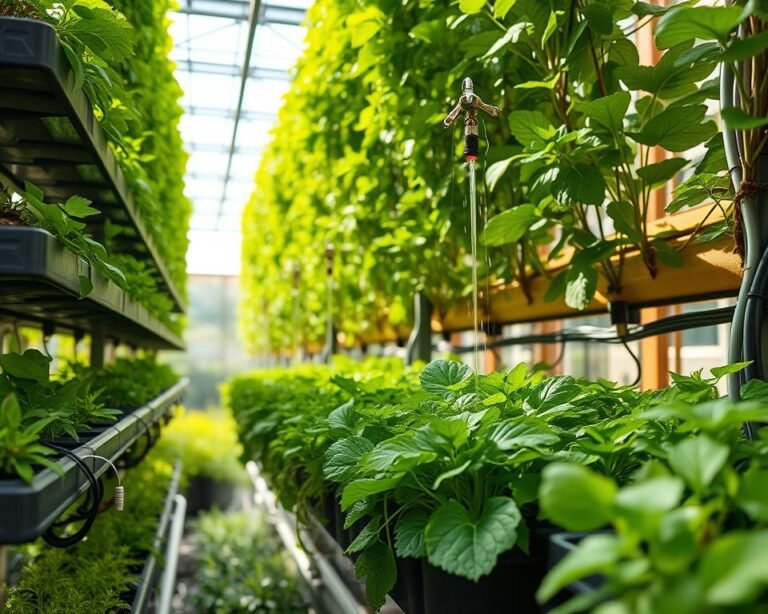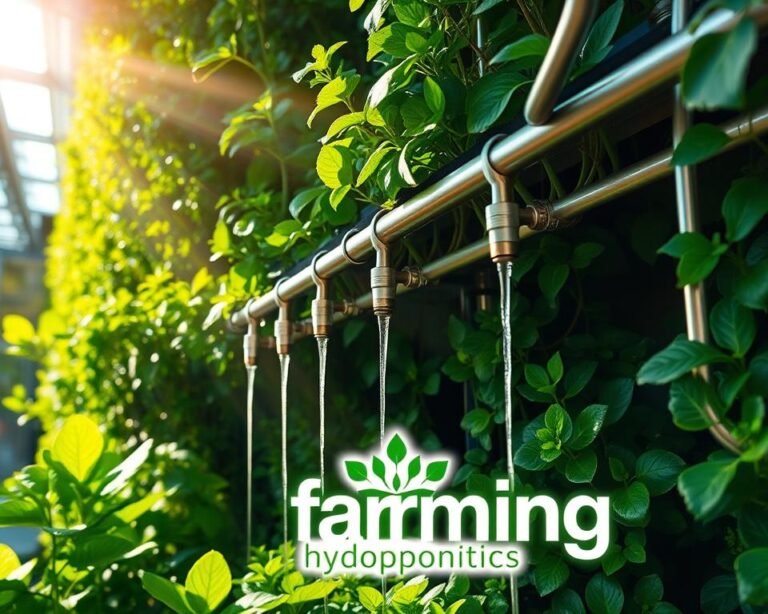Beginner Gardening Guide for Container Success
Ever dreamed of growing your own veggies but thought you didn’t have enough space? Container gardening is the answer. I turned my tiny balcony into a lush garden, and I’m here to show you how. This beginner gardening guide will help you start your own container garden, no matter where you live.
Container gardening is great for those with little outdoor space. You can grow veggies, herbs, and on a small patio, balcony, or even a sunny spot. It’s perfect for both city dwellers and those with bigger spaces, offering endless possibilities for your garden.
Key Takeaways
- Perfect for gardening in limited spaces
- Flexible and portable garden solution
- Suitable for growing vegetables, herbs, and flowers
- Ideal for beginners with minimal gardening experience
- Allows creative control over plant environment
Essential Container Gardening Basics for Success
Container gardening lets you grow plants in small spaces. It’s great for balconies or small gardens. Knowing the basics is key to success.
Start with the right tools and design. The right choices can turn a small space into a lush garden.
Selecting the Perfect Container
Choosing a container is more than looks. Think about these important points:
- Size matters – most vegetables need containers at least 12 inches in diameter
- Material options include:
- Plastic (lightweight and affordable)
- Terracotta (classic and breathable)
- Ceramic (decorative and sturdy)
- Fabric grow bags (excellent for root health)
Mastering Drainage Requirements
Drainage is crucial for container gardening. Without it, plants can suffer from root rot and other problems.
| Container Type | Drainage Needs | Recommended Solution |
|---|---|---|
| Plastic Containers | Moderate | Drill multiple holes at bottom |
| Terracotta Pots | High | Ensure pre-existing drainage holes |
| Fabric Grow Bags | Excellent | Naturally permeable material |
Choosing the Right Garden Soil
“The secret to container gardening success lies in your soil choice.” – Professional Gardener
Not all soil is the same. For containers, use a high-quality potting mix. Don’t use garden soil, as it’s too heavy.
- Look for mixes with perlite and compost
- Ensure good drainage and aeration
- Choose organic options when possible
Focus on these basics for a successful container garden. It will yield great results.
Beginner Gardening Guide: Getting Started with Plants

Starting with vegetable gardening can feel daunting. But, container gardening is a great way for beginners to begin. Most veggies need 6 to 8 hours of sunlight each day. So, your balcony or patio is a perfect spot to grow them.
When you start your organic gardening journey, consider these easy plants:
- Tomatoes (transplants work best for beginners)
- Peppers
- Lettuce
- Bush beans
- Herbs like basil and rosemary
Picking the right plants is key to managing pests and getting a good harvest. Companion planting is a natural way to protect your garden. For example, basil near tomatoes can keep pests away and make the tomatoes taste better.
Flower gardening fans can mix flowers with veggies in their containers. This makes your garden look good and grow well. Pick plants that need the same amount of water and sunlight.
Pro tip: Start small and try a few varieties to get better at gardening.
Beginners should start with fast-growing crops like radishes and bush beans. They give quick results and boost your confidence. You can also buy pre-potted plants from local nurseries to make things easier.
Mastering the Thriller, Filler, and Spiller Technique
Container gardening turns into an art when you grasp the “thriller, filler, and spiller” design. This method makes ordinary flower gardening into a stunning display that grabs everyone’s attention.

This technique divides container planting into three key plant types. Each type is vital for creating balanced and beautiful displays.
Understanding the Thriller Component
Thrillers are the stars of your container garden. They are the tall, eye-catching plants that grab attention first. Think of plants like:
- Canna Lilies
- Ornamental Grasses
- Elephant Ears
- Dracaena
Selecting Appropriate Fillers
Filler plants are the supporting actors. They add volume, texture, and color around the thriller. This creates a lush look. Good fillers include:
- Begonias
- Geraniums
- Coleus
- Lantana
Choosing Effective Spillers
Spillers cascade over the container’s edges, softening the look. They add movement and complete your garden design. These plants make your garden look full and abundant.
| Spiller Category | Recommended Plants |
|---|---|
| Trailing Flowers | Sweet Alyssum, Calibrachoa |
| Vine-like Plants | Sweet Potato Vine, Ivy |
| Delicate Spillers | Bacopa, Verbena |
“The key to a stunning container garden is balance and harmony between your thriller, filler, and spiller plants.” – Container Gardening Expert
By carefully mixing these three plant types, you’ll make container gardens that are more than just plants. They become living art that changes and delights all season.
Proper Care and Maintenance Tips
Container gardening needs the right watering. Your plants need more water than garden beds, mainly when it’s hot. Check if the soil is dry by sticking your finger 2 inches deep. Water only when it’s dry.
Container gardens might need water every day in summer. Adjust as the seasons change.
Organic gardening helps your plants grow well. Use an all-purpose fertilizer and mix it as the package says. Experts suggest feeding your plants every 2-3 weeks in growing season. Use Miracle-Gro® Shake ‘n Feed® for nutrients.
Watch out for garden pests to protect your plants. Check your plants daily for signs of trouble like yellow leaves or powdery mildew. Keep your tools clean to avoid spreading diseases.
Group tropical plants together to make a humid spot. Most houseplants like temperatures between 65 to 85 degrees Fahrenheit.
Container gardening takes patience and care. Repot your plants every 12 to 18 months. Make sure they get enough sunlight and have good drainage. Follow these tips to keep your container garden healthy and lively all year.







